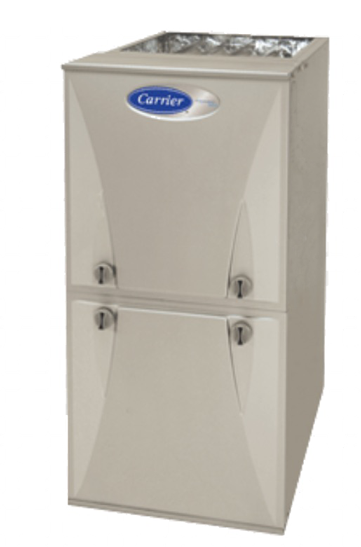
Design | Installation | Maintenance | Automation
24-Hour Emergency Service
Helpful Tips
- Remember to check your furnace filter monthly and / or replace every 90 days.
- You can save 3 percent on your heating bill for every one degree you lower the thermostat.
- Keep a minimum clearance of 18 inches around your outdoor unit.
- Rearrange your furniture to assure all heating vents are clear. Keep seating areas away from outside walls so you do not feel drafts while you relax.
- Install a programmable thermostat. This will allow you to program the temperature lower during the night and also times of the day you are routinely away from home.
- Make sure your furnace is in optimal working condition. Have your heating system inspected and maintained on a regular basis.
- Add insulation to unheated areas of your home (i.e. attics and crawlspaces).
- During sunny days open drapes and window treatments, but during evening hours by keeping windows covered you will slow the loss of heat from the room.
- Simple ways to save money on utilities.
- Seal duct work in your home.
- Set your heat set point down when your not home.
- Lock your windows for a tighter seal.
- Turn down your hot water heater when you leave town.
- Turn off lights in rooms you ar not currently in.
- Ensure your weather stripping is properly sealing around your doors.
- Tankless water heaters can save you money. For homes that use 41 gallons or less of hot water daily, demand water heaters can be 24%–34% more energy efficient than conventional storage tank water heaters. They can be 8%–14% more energy efficient for homes that use a lot of hot water -- around 86 gallons per day.

Discover 8 fast and easy ways to know when to replace your gas furnace before it costs you money or becomes unsafe. A comfortable and healthy home environment requires an efficient and sound heating system. Such a system heats the home without using large amounts of energy and it does not endanger the indoor air quality by overtaxing the supply of oxygen needed for combustion. It is important to know the 8 warning signs that your furnace may need replacing. It is especially important not to wait until a crisis occurs . A cold night in January, with the furnace faltering or failed, is not the time to assess your heating system. Do it now.
Information is the key to making a wise decision. This report will teach you what the 8 warning signs that your furnace may need replacing. This report is based on research undertaken by the federal Department of Energy, the Environmental Protection Agency, Minnesota Department of Public Service and electric and gas utilities. It also draws on the training resources of heating and cooling manufacturers, trade associations, and field service personnel.
- How old is your furnace? A good place to start is to compare your furnaces age to the national average. The average life expectancy of furnaces in homes today is between 16 and 20 years. If your furnace is close to this age or older, you should begin shopping. Shopping for a replacement furnace in an emergency does not allow time to make your best decision. Most people prefer to replace their furnace as a planned home improvement rather than a panic replacement when your furnace is faltering or failed. For starters, look at your furnace to see if you have a pilot light. If you do, it is almost certain to be over 25 years old!
- Gas & Electric Bills Going Up? Rising gas and electric prices are not the only reason for high bills. Furnaces often lose their efficiency as they age especially if they have not been properly maintained. As a result your furnace may run longer to provide the same amount of heat. This will cause your gas & electric bills to go up. The money you pay the gas & electric company every month could be used to pay for new furnace.
- Any Furnace Repairs in the last 2 years? Furnaces are like cars. As they age, you can replace one part only to have to replace another part next year. It doesn't take long to spend $500 just to keep the old furnace running. Furnaces incur the most breakdowns in the last 2 years of their lives. Another repair sign is whether you had to wait to get parts replaced. As a furnace ages, it gets harder to get replacement parts. This waiting can really be cold on a below zero night.
- Does your thermostat keep you comfortable? Do you feel that some rooms are too cold while others are too hot? Or are you always trying to adjust your thermostat to make your home more comfortable? This is a sign that your furnace lacks the ability to properly distribute the air to keep you comfortable in your home.
- Is your burner flame yellow instead of blue? A yellow or flickering flame may be a sign that poisonous carbon monoxide could be created by your furnace. Other possible signs of carbon monoxide are: Streaks of soot around furnace; Absence of an upward draft in your chimney; Excess moisture found on windows, walls, or other cold surfaces; Excessive rusting on flue pipes, other pipe connections, or appliance jacks; Small amount of water leaking from the base of the chimney, vent, or flue pipe; Rust on the portion of the vent pipe visible from the outside.
- Is your furnace making strange noises? Old furnaces often start to make some strange noises as they get toward the end of their life. Have you heard any banging, popping, rattling, or squealing noises coming from your furnace? Another noise is when you hear the furnace blower running excessively. Does your blower turn on & off frequently or does it blow cold air sometimes? If so, this is a sign that your furnace may need to be replaced.
- How have you & your family been feeling? Furnaces as they age run the risk of developing cracks in the heat exchanger inside your furnace. Carbon monoxide, if present, could leak into your home undetected. Signs of this may be frequent headaches, a burning feeling in nose or eyes, nausea, disorientation, flu-like symptoms. Should you experience any of these, air out your house, open a window to the furnace room and immediately call a gas service technician. Cracks in the heat exchanger can occur undetected which is why no one advises waiting until they occur.
- Is your house dry or dusty? Old furnaces often lack the ability to moisturize and clean the air in your home. Your house air may feel stuffy or stale. Does anyone in your family suffer from allergies to airborne dust, mold, pollen, viruses or dander? Or does anyone suffer from dry nose, dry throat, or dry skin? Other signs may be frequent dust accumulation, static shocks, drooping plants, furniture cracking and musical instruments that do not stay in tune. These signs all suggest that your old furnace is not capable of providing you with the comfort you and your family may want.

- Prevents and relieves dry and scratchy lips and skin
- Humidifiers moisten the air which helps eliminate flu, cough, and cold symptoms
- Moist, humid air helps reduce nosebleeds
- Helps asthma suffers as the improved air quality moisturizes the respiratory system
- Added moisture allows the throat and nose to block dust and bacteria from entering
- Keep infants and young children from getting sick and helps them sleep better
- Increases oxygen levels, thus reducing headaches, fatigue, and overall tiredness
- Keeps wood floors, furniture, plaster and paint from drying out and separating, cracking or peeling
- Prevents static shock by reducing the static electricity in the room
- Lowers heating bills by raising the humidity levels, making your home and body feel warmer and more comfortable
- Using a humidifier frequently can help you save on furniture repairs and doctor’s visits.
- Make sure to keep the humidity around 40% to keep mold from forming in your house. If your home is too humid you will notice moisture on the windows, meaning the humidity needs to be turned down.
If you think added humidity would benefit your home and family call a heating and cooling specialist today and find your perfect air humidifier.
When installed into your home's heating and cooling system, an Electronic Air Cleaner traps and filters up to 99%* of airborne particles passing through the system to make sure cleaner air is distributed to all rooms in your home. When this air goes through a EAC, the pre-filter traps the majority of the large particles. The particles that are too small to be trapped in the pre-filter are charged positive, and then attracted to negatively charged plates. This advanced air filter captures microscopic impurities like dust, smoke and smog particles in addition to larger particles like mold spores and cat dander. Plus, you can say goodbye to monthly filter replacements by simply washing the air cleaner cells in your dishwasher or sink.
If you have pets, smokers, allergy or asthma suffers in your home, you may want to think about a Whole-house Electronic Air Cleaner. An EAC can improve the indoor air quality as well as the performance of your system. That's why many people are now investing in electronic air cleaners, to treat the air in their homes and minimize pollutants. Polarization technology effectively removes mold spores, bacteria, smoke and carcinogenic particles that other filter systems will not easily stop.
If you or someone in your family has health issues that relate to air quality, then an electronic air cleaner is the way to go. If you are installing a new heating or air conditioning system, then make sure you have an electronic cleaner installed with the new system. If you have an existing hot air heat or air conditioning system, then you can have one installed in the old system. The new filter can be easily installed in most hot air heating systems.